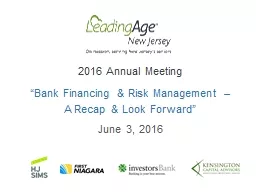PDF-Comments on “What Does the Yield on Subordinated Bank Debt Measur
Author : lois-ondreau | Published Date : 2016-08-08
payout if there is a bad outcome For the optimists the bank has a subordinated debt contract For the less optimistic there is senior debt it explains the simultaneous
Presentation Embed Code
Download Presentation
Download Presentation The PPT/PDF document "Comments on “What Does the Yield on..." is the property of its rightful owner. Permission is granted to download and print the materials on this website for personal, non-commercial use only, and to display it on your personal computer provided you do not modify the materials and that you retain all copyright notices contained in the materials. By downloading content from our website, you accept the terms of this agreement.
Comments on “What Does the Yield on Subordinated Bank Debt Measur: Transcript
Download Rules Of Document
"Comments on “What Does the Yield on Subordinated Bank Debt Measur"The content belongs to its owner. You may download and print it for personal use, without modification, and keep all copyright notices. By downloading, you agree to these terms.
Related Documents














